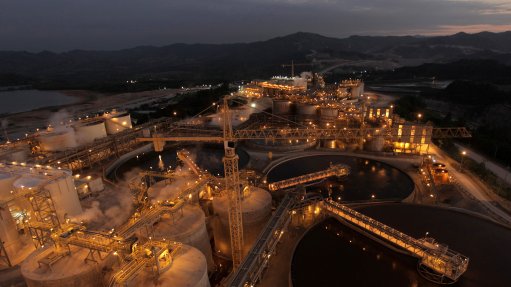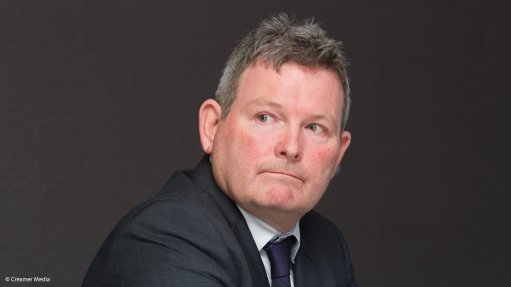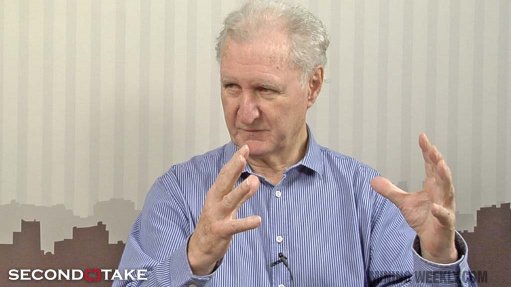Prevention of harm needs to be acknowledged as a top priority by all companies – RMF report
The harmful impacts of mining remain a challenge for society to acknowledge and address, the Responsible Mining Foundation’s (RMF’s) latest sustainability report states, noting that, on the upside, responsible companies are at least creating positive contributions and managing environmental, social and corporate governance (ESG) risks.
The report states that the term ESG risks has become a euphemism for the potential harmful impacts of mining, though in the context of the energy transition, industry actors now refer to green mining, and mining as a “future-enabling” industry.
The report, however, states that the harmful impacts of mining persist, and that it is necessary to name the risks for what they are – harm to people, environments and economies of producing countries when prevention fails.
The report by the RMF, therefore, calls for the normalisation of the prevention of harmful impacts across the industry.
Based on public domain information, the report, titled ‘Harmful Impacts of Mining: when extraction harms people, environments and economies’, shows that harmful impacts are not inevitable, and yet they happen across the world, not only in jurisdictions with limited regulatory oversight.
The RMF says a lack of adequate corporate measures to prevent harm is by far the most common cause of the reported incidents identified in the study, beyond cases where harmful practices are permitted by law, intentional acts or integrated into regular business procedures.
The RMF study and report takes into account reports of specific incidents and does not include ongoing and cumulative environmental impacts such as greenhouse-gas (GHG) emissions, deforestation and acid mine drainage.
These impacts, while important, are more difficult to capture as they are rarely reported as standalone events.
Even so, according to RMF CEO Hélène Piaget, “The prevalence of mining-induced harmful impacts seen in the study sample of around 1 000 mine sites from 38 companies points to the high risk of such harm across the estimated 35 000 mine sites worldwide”.
She adds that many mining companies have set in place risk management systems designed to prevent harmful impacts, though she laments that these corporate measures, while basic building blocks of responsible mining, are no guarantee that harmful impacts will be prevented, as incidents still occur when risk management systems are weak or not implemented systematically.
"We still observe high levels of worker fatalities and injuries despite years of international conventions on worker safety. And communities in mining areas are too often exposed to polluted environments and other dangers. The normalisation of prevention needs to be prioritised across the industry,” she adds, noting that the prevention of harm is in everyone’s interest and that responsible practices can help prevent or at least minimise the worst impacts.
Piaget notes that “lessons have been learned” from major harmful impacts over the years, so the industry knows what needs to be done. These lessons now need to be shared widely and applied systematically and proactively.
Given societies’ dependence on mined resources, and the likely increase in mining activity to support the energy transition, Piaget says the prevention of harm needs to be acknowledged as a top priority by all companies operating across all jurisdictions.
Effective prevention of harm will require an honest dialogue with society, compelling leadership from all industry stakeholders and the normalisation of investment in comprehensive systems of prevention, she explains.
Governments and regulators should play their part by strengthening preventive regulatory environments and ensuring a safe civic space that enables open dialogue among all stakeholders, and independent monitoring and reporting by civil society, media and others.
Comments
Announcements
What's On
Subscribe to improve your user experience...
Option 1 (equivalent of R125 a month):
Receive a weekly copy of Creamer Media's Engineering News & Mining Weekly magazine
(print copy for those in South Africa and e-magazine for those outside of South Africa)
Receive daily email newsletters
Access to full search results
Access archive of magazine back copies
Access to Projects in Progress
Access to ONE Research Report of your choice in PDF format
Option 2 (equivalent of R375 a month):
All benefits from Option 1
PLUS
Access to Creamer Media's Research Channel Africa for ALL Research Reports, in PDF format, on various industrial and mining sectors
including Electricity; Water; Energy Transition; Hydrogen; Roads, Rail and Ports; Coal; Gold; Platinum; Battery Metals; etc.
Already a subscriber?
Forgotten your password?
Receive weekly copy of Creamer Media's Engineering News & Mining Weekly magazine (print copy for those in South Africa and e-magazine for those outside of South Africa)
➕
Recieve daily email newsletters
➕
Access to full search results
➕
Access archive of magazine back copies
➕
Access to Projects in Progress
➕
Access to ONE Research Report of your choice in PDF format
RESEARCH CHANNEL AFRICA
R4500 (equivalent of R375 a month)
SUBSCRIBEAll benefits from Option 1
➕
Access to Creamer Media's Research Channel Africa for ALL Research Reports on various industrial and mining sectors, in PDF format, including on:
Electricity
➕
Water
➕
Energy Transition
➕
Hydrogen
➕
Roads, Rail and Ports
➕
Coal
➕
Gold
➕
Platinum
➕
Battery Metals
➕
etc.
Receive all benefits from Option 1 or Option 2 delivered to numerous people at your company
➕
Multiple User names and Passwords for simultaneous log-ins
➕
Intranet integration access to all in your organisation


















